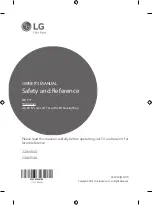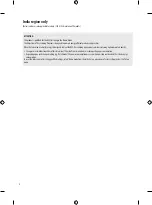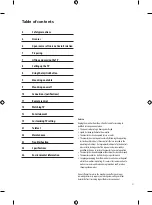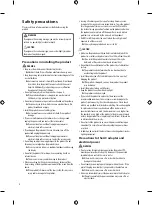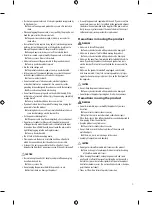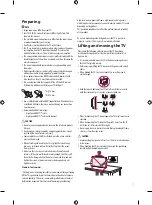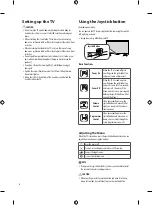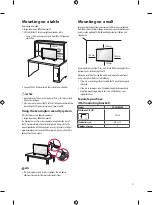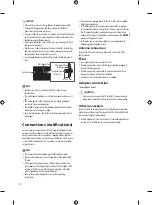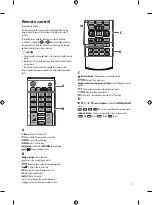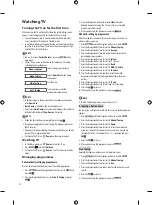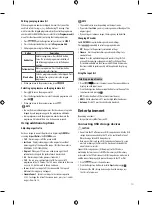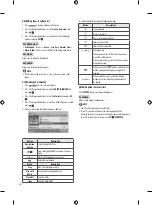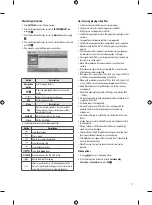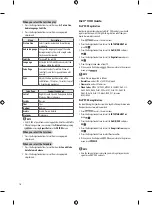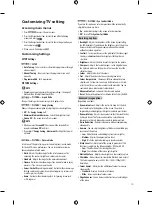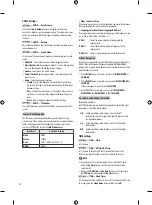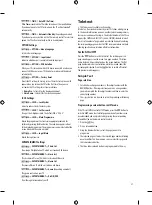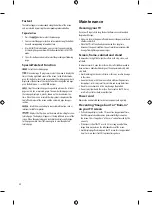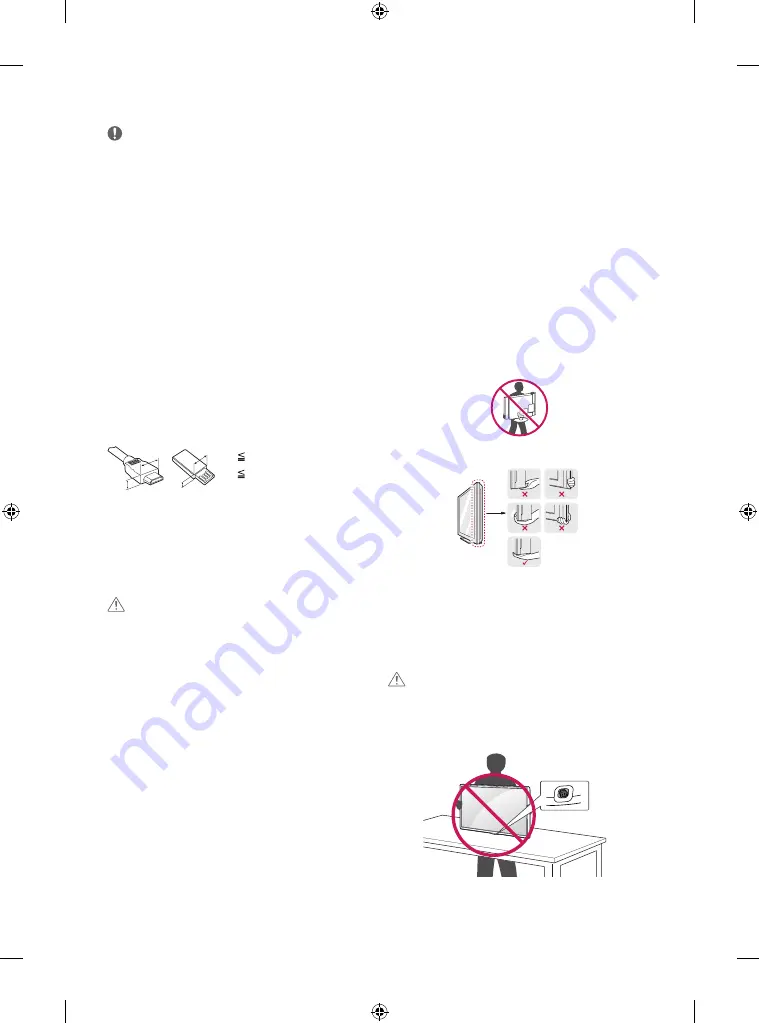
7
Preparing
NOTE
y
Image shown may differ from your TV.
y
Your TV’s OSD (On Screen Display) may differ slightly from that
shown in this manual.
y
The available menus and options may differ from the input source
or product model that you are using.
y
New features may be added to this TV in the future.
y
The TV can be placed in standby mode in order to reduce the power
consumption. And the TV should be turned off if it will not be
watched for some time, as this will reduce energy consumption.
y
The energy consumed during use can be significantly reduced if the
level of brightness of the picture is reduced, and this will reduce the
overall running cost.
y
The items supplied with your product may vary depending upon
the model.
y
Product specifications or contents of this manual may be changed
without prior notice due to upgrade of product functions.
y
For an optimal connection, HDMI cables and USB devices should
have bezels less than 10 mm thick and 18 mm width.
y
Use an extension cable that supports USB 2.0 if the USB cable or
USB memory stick does not fit into your TV’s USB port.
A
B
A
B
*A 10 mm
*B 18 mm
y
Use a certified cable with the HDMI logo attached. If you do not use
a certified HDMI cable, the screen may not display or a connection
error may occur.
y
Recommended HDMI cable types
-
High-Speed HDMI®/
TM
cable
-
High-Speed HDMI®/
TM
cable with Ethernet
CAUTION
y
Do not use any unapproved items to ensure the safety and product
life span.
y
Any damage or injuries caused by using unapproved items are not
covered by the manufacturer’s warranty.
y
Some models have a thin film attached on to the screen and this
must not be removed.
Lifting and moving the TV
Please note the following advice to prevent the TV from being
scratched or damaged and for safe transportation regardless of its
type and size.
y
It is recommended to move the TV in the box or packing material
that the TV originally came in.
y
Before moving or lifting the TV, disconnect the power cord and all
cables.
y
When holding the TV, the screen should face away from you to
avoid damage.
y
Hold the top and bottom of the TV frame firmly. Make sure not to
hold the transparent part, speaker, or speaker grille area.
y
When transporting the TV, do not expose the TV to jolts or excessive
vibration.
y
When transporting the TV, keep the TV upright, never turn the TV
on its side or tilt towards the left or right.
y
Do not apply excessive pressure to cause flexing /bending of frame
chassis as it may damage screen.
CAUTION
y
Avoid touching the screen at all times, as this may result in damage
to the screen.
y
When handling the TV, be careful not to damage the protruding
joystick button.(depending on model)
When attaching the stand to the TV set, place the screen facing
down on a cushioned table or flat surface to protect the screen
from scratches.
Make sure that the screws are inserted correctly and fastened
securely. (If they are not fastened securely enough, the TV may tilt
forward after being installed.) Do not use too much force and over
tighten the screws; otherwise screw may be damaged and not
tighten correctly.
Generated sound
“Cracking” noise: A cracking noise that occurs when watching or turning
off the TV is generated by plastic thermal contraction due to tempera-
ture and humidity. This noise is common for products where thermal
deformation is required. Electrical circuit humming/panel buzzing:
A low level noise is generated from a high-speed switching circuit,
which supplies a large amount of current to operate a product. It varies
depending on the product.
This generated sound does not affect the performance and reliability
of the product.
Do not use high voltage electrical goods near the TV (e.g. electric
mosquito-swatter). This may result in product malfunction.
y
y

